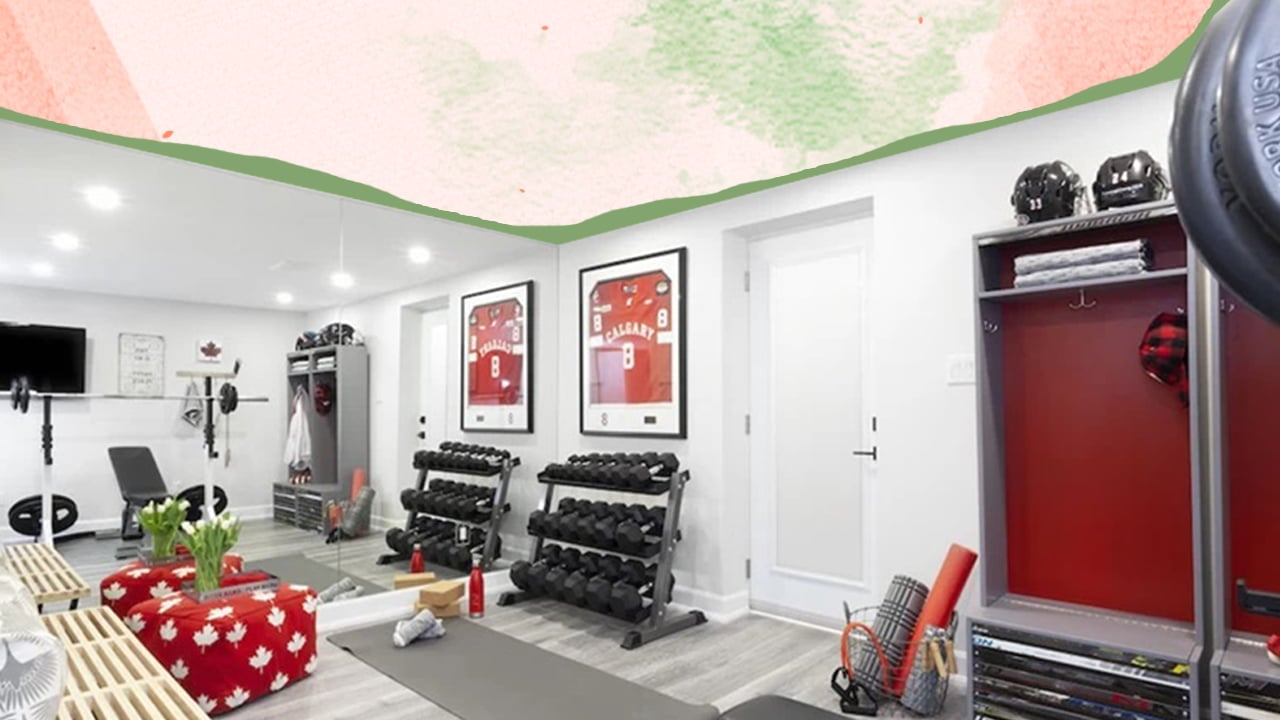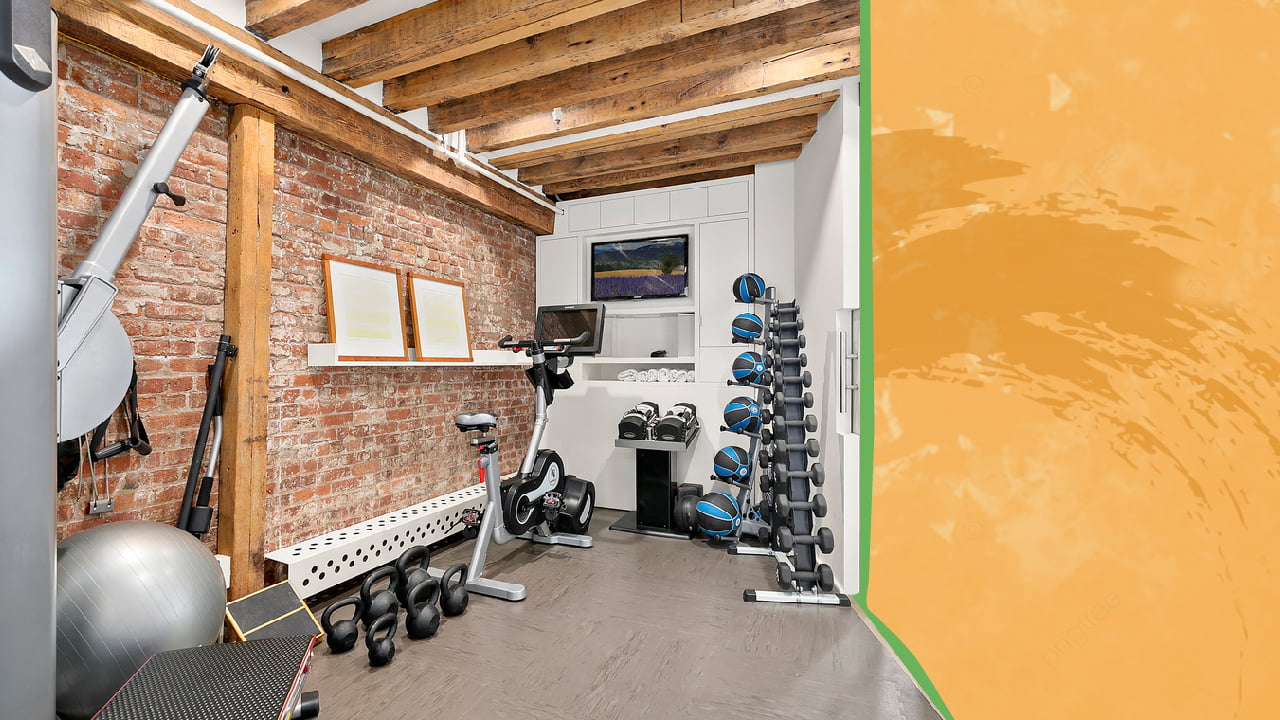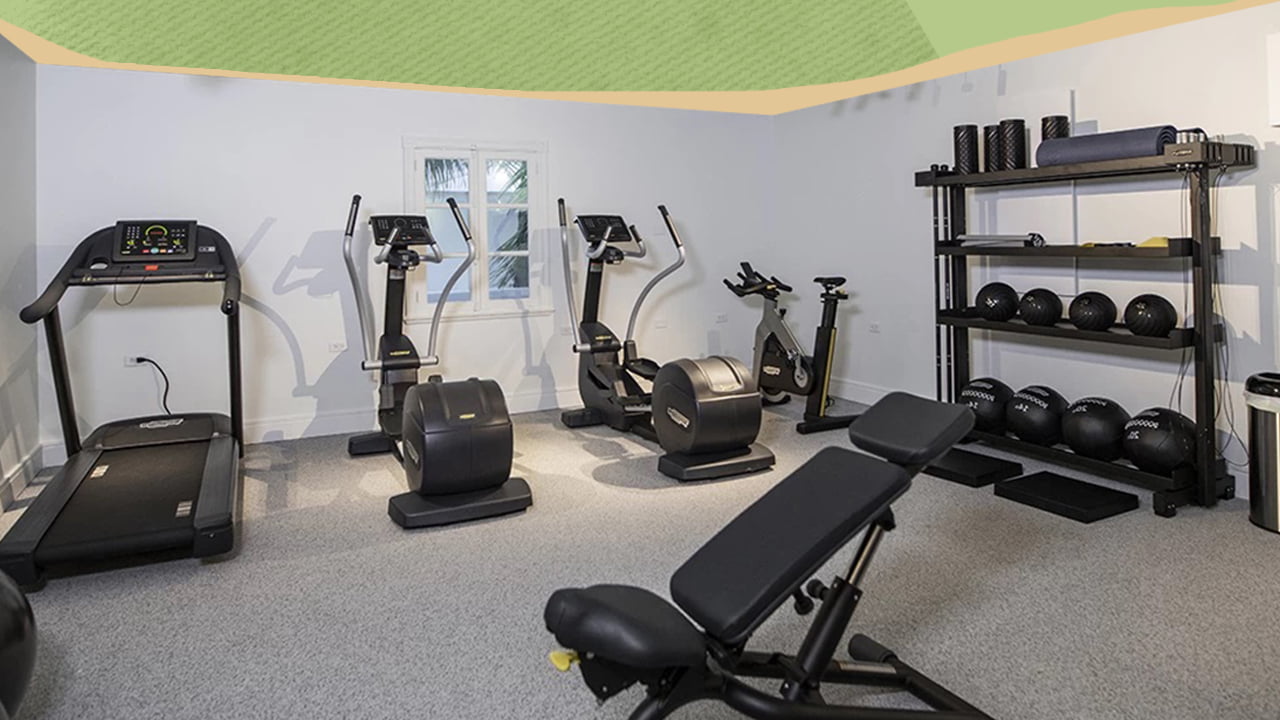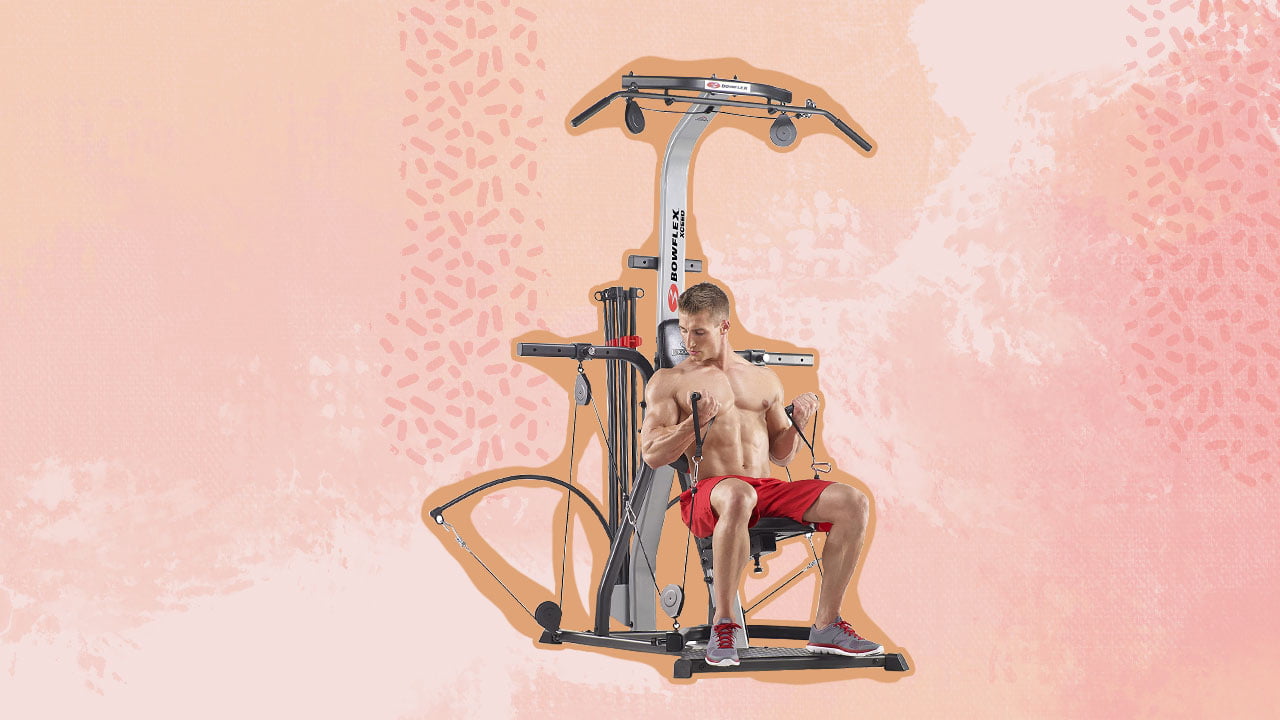How To Build A Home Gym In Basement | All You Need To Know
Setting up a home gym in the basement will require selecting equipment that can be easily installed since most basements have very low ceilings. It will also require ensuring proper ventilation and blocking the entry of moisture that can damage the equipment. If you want to save money and time while working out, building a […]

Setting up a home gym in the basement will require selecting equipment that can be easily installed since most basements have very low ceilings. It will also require ensuring proper ventilation and blocking the entry of moisture that can damage the equipment.
If you want to save money and time while working out, building a home gym might be a great idea.
Such gyms can be set up in almost any space, but having a dedicated space for the purpose, like a garage or a basement, is ideal. But building a basement gym isn’t very simple, and there are many things to consider before getting started.
That’s where this guide can help you out.
Benefits Of Having A Basement Gym

Before looking at the ways by which you can set up a home gym in your basement, let’s look at the advantages that such a gym offers.
1. Better Temperature Control
The basement and the garage are the most commonly used spaces for building a home gym. But a basement gym is a much better choice if you live in an area that experiences extreme temperatures. The basement will remain comfortable even if the weather outside is freezing or extremely hot. That being said, when the weather outside is pleasant, you may not want to train in a basement gym.
In contrast, a garage gym can become very hot during the summer; conversely, you will need to spend quite some time warming it up in the winter.
2. Better Equipment Maintenance
Gym equipment can easily get damaged when exposed to the elements, and the chances of that happening is higher if you train in the garage. This means the equipment will require more maintenance.
On the other hand, a basement home gym keeps your equipment protected from extreme temperatures and moisture. Therefore, they won’t require much maintenance and will last longer.
3. Ideal For Parents
Many parents often prefer to build home gyms rather than join a commercial gym since it is easier to manage the kids. And since garage temperatures are not suitable for children, the basement is a suitable space for the purpose. You can even add a basketball hoop or build a rock-climbing wall in your basement to make your gym child-friendly.
Things To Keep In Mind When Building A Basement Home Gym
You should be aware of a few things when planning to build a home gym in your basement.
1. Adequate Space
The first thing to consider when building a basement home gym is how much space is available. It is essential to have a large enough space where you can move around freely while working out and also store all the equipment easily.
According to the American Council On Exercise, about 50 to 200 square feet of space is required for multi-purpose exercises.
2. Ceiling Height
Basements usually have a low clearance, which can affect the type of exercises you can perform and the equipment that can be used. For instance, for many people, it may not be possible to perform overhead lifts, though there can be exceptions. Similarly, Olympic lifters who need to perform a snatch and jerk may find a basement gym unsuitable.
Ideally, the ceiling should be located at the height of eight feet from the floor. There should also be plenty of space in front, and at the back so you can drop the barbell or whatever weight is being lifted. And the gym equipment should be selected keeping in mind the height of the basement.
3. Setting Up The Equipment
The majority of home gym equipment needs to be assembled after they are delivered, which is good if you plan to have a basement gym. The equipment can be moved to the basement and assembled inside. But there may be some equipment that is too large or has already been assembled. What’s more, it may not be possible to disassemble such equipment and carry it to the basement.
That is why you should choose the equipment carefully when building a basement home gym.
4. Moisture Problems
As I mentioned before, compared to a garage gym, a basement gym can keep your equipment protected against extreme temperatures and moisture. However, if your basement is too humid, it may not be the best place to keep expensive gym equipment.
I would also advise sealing the walls and doors to prevent moisture entry. Using gorilla tape, you can test whether the walls allow moisture to seep in by attaching a piece of plastic around the edges. Leave this plastic for three to four days and check whether there is any condensation on the inside afterwards. If there is, use building insulation to prevent water from entering the space.
Additionally, a functional sub-pump can protect the area in case of flooding, and a dehumidifier can come in handy.
5. Proper Ventilation
Proper ventilation is important, especially if you’re performing aerobic exercises. Basements with windows do not suffer from ventilation problems, but if there are no windows, you should get an exhaust or ceiling fan installed.
6. Power Outlets
Many exercise machines, especially those meant for cardio, require electricity to function. Having adequate electrical outlets in the basement will allow you to install different equipment easily. And it will prevent accidents since you won’t need to use haphazardly placed extension cords on the floor.
7. Consider Your Budget
While there are many basement home gym ideas that you can try out, they can be quite expensive. But there are a few ways to save money, such as getting used exercise equipment from the internet or from local garage sales.
Platforms like Craigslist or Facebook Marketplace are among the best places where you can find such equipment at low prices.

How To Build A Home Gym In Basement
1. Freeing Up Space
In most homes, the basement is used for storage and often contains lots of things that will probably never be used. That is why the first step of setting up your basement home gym is to free up the space by cleaning and removing unnecessary items.
You may not be sure about what to do with all that stuff, but there are many ways by which it can be disposed of. Depending on the items, some can be donated to charitable organizations or sold off. Others, such as furniture, can be gifted to friends, while those that are usable can be moved to another room.
2. Making Repairs
Once the basement has been cleaned and all items that are not needed have been removed, it is time to perform repairs. Make a proper inspection of the area to determine where and what repairs are required.
If your basement has moisture problems, it will require waterproofing to protect the equipment that will be placed there. Cracks in the ceiling and floor will also need to be repaired; similarly, there may be some damage caused by pests. Repairing the walls, floor and ceiling is a time-consuming task, so I would suggest hiring professionals for it.
3. The Painting Process
You may not think that it is important to paint the basement, but doing so can really affect how the unfinished basement space looks. I prefer painted basement walls because the process doesn’t take much money or effort but can make a huge difference in its appearance.
And paint can be used in all basements, whether made of cinder blocks, drywall, or other material. But you may need to make some adjustments to the painting technique depending on the material.
For instance, when painting walls made of cinder blocks, you should first use block filler to make them paintable and protect them from moisture. When painting textured surfaces, use foam rollers and a stiff paintbrush to ensure the paint enters all the mortar grooves and lines. But the best tool for this purpose is a masonry brush.
Also, while painting, keep in mind the lighting in the basement. I prefer using light colors over darker ones in basements that have poor lighting because they make the space bright. Once the painting process is complete, you can put up a mirror for form check and to further improve the aesthetics of your basement gym.
4. The Flooring
It is possible to exercise on carpeted or even bare concrete floors, but that poses some risks to your safety and health. And if the basement is already tiled or carpeted, you may need to remove the tiles or carpet to create a suitable home gym space.
Once the existing flooring has been removed, you can select from the available basement gym flooring materials. These can include:
1. Foam Tiles
Foam tiles are great for shock absorption and are also comfortable to walk on, making them perfect for low-impact workouts, such as Pilates or yoga. But they are not a great option if you plan to use an adjustable weight bench or similar heavy workout equipment. Foam tiles generally cost between $1 and $5 per square foot.
2. Vinyl Panels
Vinyl panels are a durable option that can withstand a lot of abuse and look reasonably good. While they are not as resilient as natural rubber, cleaning and maintaining them is easier. They are also quite affordable, costing between $1 and $5 per square foot.
However, if you opt for such panels, I recommend investing in yoga mats for kneeling or stretching exercises. A yoga mat will make it more comfortable to perform these activities on such flooring.
3. Rubber Mats
Rubber is a versatile material that can easily support even the heaviest workout machine. It is also great for absorbing shocks and can be purchased as rollable mats and interlocking tiles.
You can get rubber flooring installed in the basement easily, but compared to other flooring materials, it can be a bit expensive, costing between $3 and $8 per square foot.
4. Horse Stall Mats
Horse stall mats are another option worth considering and offer a good combination of sturdiness and comfort. They are usually made from recycled rubber or high-density EVA foam and are used for preventing muscle fatigue in horses.
Such mats are cost-effective and hold up much better than traditional gym mats. They also have a good grip and can protect the floor from drops, thanks to their thickness. And I personally like them because they are great at reducing noise.
5. Lighting
Often underrated, proper lighting can make even the most boring space look lively and appealing. And for a gym set up in a basement, there are many options to try out, such as replacing old fluorescent light fixtures with modern string lights.
These can be hung from the ceiling in a crisscross manner to ensure that each basement area is well-lit. Alternatively, you can go with linkable, plug-in LED fixtures that are easy to install and energy efficient.
Just keep in mind that whatever overhead lighting you select should have a color temperature of 5000k or be classified as daylight. This will provide the same level of lighting as the midday sun. And for those who spend time meditating or doing yoga, it is a good idea to go with lights with a dimming option.
6. Equipment Storage
Once aspects like the flooring and lighting of the workout space are dealt with, it is time to consider the storage options for your basement gym.
1. Dumbbell Storage
Having equipment like dumbbells strewn across the floor can increase the chances of tripping over and injuring yourself. To prevent such accidents, having proper storage space is crucial, and racks are an excellent solution. Weight racks are best for storing dumbbells or free weights and can help keep them organized.
However, to mount such racks, you will need to put up some walls in case of an unfinished basement.
2. Barbell Storage
If you have limited space to store all exercise equipment, wall storage options might be better. This is especially true for storing barbells, which can be mounted on walls to save floor space. And there are many DIY barbell storage options, such as wall-mounted plates, that are ideal for a small space.
3. Other Options
Other storage options include using a little basket for smaller stuff that may be present in the gym. For instance, if you plan to install a TV or refrigerator in the basement, the power strip to which it has to be connected can be placed in the basket.
Or if, like me, you have a large Tupperware tub at home, you can use it for storing equipment like a kettlebell, yoga blocks, or other small exercise equipment. Hooks and shelves can come in handy for hanging yoga mats, resistance bands, medicine balls, and other accessories.
Also, a functional home gym should always have a section where you can store microfiber cloths, a sweat towel, medicines, hand sanitizer, antibacterial spray, and similar items.

7. Choice Of Equipment
When planning to purchase equipment for your basement gym, here are some options to consider:
1. Workout Rack
The workout rack is often the most important exercise equipment you are going to use. And in the case of low-ceilinged basements, finding one that can easily be installed in such a space will require some effort and time. But remember that racks are usually a long-term investment, so getting a good-quality one is important.
Exercise racks have various attachments that can be used for different workouts, such as pivoting landmine attachments, shackle attachment points, and pull-up bars. Some may even have j-cups for holding barbells at different heights for strength training and they can even be used if you want to perform squats.
2. Weight Plates
Weight plates can be easily organized using a weight plate tree, which may be fixed or movable. As for the plates themselves, there are multiple options available for weight training, such as 10-pound, 25-pound, 35-pound, and 45-pound plates.
Other smaller options include 2.5 and 5-pound plates, which can be used to gradually increase the amount being lifted.
3. Cardio Equipment
Standard cardio equipment, such as ellipticals, stair climbers, or even a treadmill, require space with extra height. This means they may not be suitable for basement gyms with low ceilings. To solve that problem, I’ve researched and found some excellent alternatives.
Among these, the most popular ones include stationary bike stands for regular bikes or indoor cycling bikes like the Peloton. A stationary bicycle is also a good option for long cardio sessions or warm-ups. Another option is an indoor rower, which can be used for seated cardio exercises, or an air bike for intense workouts.
4. Camber Bar
A camber barbell is perhaps the best option for performing overhead exercises if you have a low-ceilinged basement. A cambered bar can put the weight at a low height, making it easier to train. An alternative option is to get some attachments for standard barbells to transform them into cambered ones. These are perfect if you want to save money when buying equipment.
5. Other Equipment
Other equipment options include a skipping rope, a punching bag, adjustable dumbbells, etc., which can all be used in a low-ceiling basement gym. You can save money by buying used equipment from garage sales, but before that, consider the space in your garage and buy accordingly.
Tip
When undertaking a basement makeover project for the purpose of turning it into a gym, it is a good idea to first check the equipment you already have. Also, consider which of these can be set up in the basement depending on its height.
Doing this before starting the renovation project will help you get a better idea of the equipment that needs to be purchased. And it will make the process more efficient since you already know where a particular piece of equipment will go.

How To Build A Home Gym In Basement Conclusion
Setting up a basement gym is an excellent idea if you do not want to waste money on a gym membership and enjoy the additional benefits that I’ve mentioned above. But it can take some time, depending on the condition of the basement and the type of setup required.
Also, once it has been set up, you will need to keep it clean and well-maintained. Compared to other areas of the house, maintaining a basement gym is even more important or your equipment will get damaged by dust, moisture, mold, etc.
A well-maintained gym can be a great long-term investment and can offer health benefits for the entire family. And it will help you save more since you won’t need to replace the equipment quickly.
